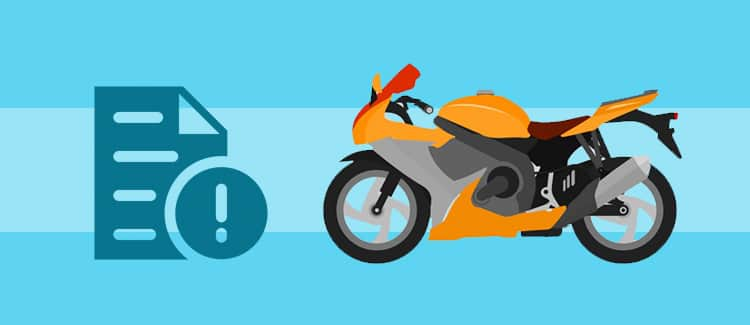What is IDV and NCB in Two Wheeler Insurance?
Insured Declared Value (IDV) and No Claim Bonus (NCB) are two of the most important factors that affect your two wheeler insurance and its premium. While IDV is the maximum amount your insurer will pay you in case of theft or total loss, NCB is a discount that you can claim if you do not make a claim in your policy tenure. The premium of a bike insurance policy is directly proportional to the Insured Declared Value, if you have purchased a comprehensive two-wheeler insurance policy. You can read the article below to get a detailed understanding of what IDV and NCB are in two-wheeler insurance and how they are different from each other.
What is IDV?
IDV or Insured Declared Value has a direct impact on the cost of your bike insurance premium. Since it is the maximum sum insured amount that an insurer pays, choosing the right IDV is highly crucial. IDV is basically the present market value of your two-wheeler that will be paid to you in cases where your 2-wheeler is stolen and not recovered by the police or is declared as a total loss implying that either your bike is not in a condition to be repaired or has incurred a loss of more than 75% of its value. If the age of your two-wheeler is more than 5 years or if the model of the 2-wheeler has become obsolete, then its Insured Declared Value can be mutually decided between the insured and the bike insurance provider.
You can calculate the IDV of your bike using the following formula:
Manufacturer's listed selling price - the depreciation.
(Note: The cost of non-factory fitted accessories is calculated separately.)
How to Know the IDV of Your Bike?
The IDV of the two-wheeler is calculated on the basis of the selling price of the two-wheeler and after deducting the depreciation value. As the age of the bike increases, its IDV will keep reducing, hence lowering the premium. You can calculate the IDV of your bike using either an online calculator or a formula. The formula to calculate the IDV of a two-wheeler is as follows:
Insured Declared Value = (Company's listed selling price - Depreciation value) + (the cost of bike's accessories that are excluded from the listed selling price - their depreciation value)
The schedule of depreciation value and IDV is calculated based on the age of the bike and is mentioned in the table below. are as follows:
| Age of the Two-Wheeler | Rate of Depreciation | Insured Declared Value |
| Less than six months | 5 % | 95% of the bike's ex-showroom value |
| From 6 months to 1 year | 15 % | 85% of the bike's ex-showroom value |
| From 1 year to 2 years | 20 % | 80% of the bike's ex-showroom value |
| From 2 years to 3 years | 30 % | 70% of the bike's ex-showroom value |
| From 3 years to 4 years | 40 % | 60% of the bike's ex-showroom value |
| From 4 years to 5 years | 50 % | 50% of the bike's ex-showroom value |
In addition to the ex-showroom price and the depreciation rate of the bike, your bike insurer may also take into consideration other factors such as the bike's make and model, registration details, and manufacturer details to determine the Insured Declared Value.
What is NCB in Two Wheeler Insurance?
A No Claim Bonus is a discount accumulated every year based on the number of claim-free years in a policy year. Insured members who have maintained a good driving record can earn up to a maximum of 50% no-claim discount, taking into consideration your age, demographics, and profession among other factors. No-claim-discount is valid only on the 'Own Damage Premium' of a 2 wheeler insurance policy. The discount will range from 20% to 50%.
How to Calculate the NCB during Bike Insurance Renewal?
No-Claim-Bonus plays an important role in trimming down the two wheeler insurance premium amount. It is an effective way to gradually reduce the cost of the premium. The %age of NCB increases for the subsequent claim-free years. The No-claim-bonus that is applicable is listed below:
| Claim Free Years | No Claim Bonus |
| No claim filed in the 1st year | 20% |
| No claim filed for 2 continuous years | 25% |
| No claim filed for 3 continuous years | 35% |
| No claim filed for 4 continuous years | 45% |
| No claim filed for 5 continuous years | 50% |
What is the Difference Between IDV vs NCB?
The table below highlights the key differences between IDV and NCB. Both of them play a major role in deciding a bike insurance premium, hence they must be carefully calculated
| Parameter | IDV | NCB |
| Full Form | Insured Declared Value | No Claim Bonus |
| Meaning | IDV is the maximum amount that will be paid to the policyholder in case your two wheeler is stolen or totally damaged | NCB is a discount that the insurer offers on the renewal premium if you have not made any claims in the policy tenure |
| Type | Fixed Compensation in Comprehensive Bike Insurance | Discount offered on premiums during renewal for making no claims |
| Effect on Premium | Directly Proportional (Higher IDV means Higher Premium and vice versa) | Indirectly Proportional (Higher NCB results in reduced premium) |
| Transferable | No | Only while renewing bike insurance or buying an insurance for a new bike. Not Application in case of ownership transfer |
Importance of NCB and IDV in Deciding the Bike Insurance Premium
Both IDV and NCB are crucial in deciding your bike insurance premium. IDV is higher for new bikes, and reduces as your bike ages. A higher IDV indicates high premium rates and vice versa. Choosing the correct IDV will financially protect you in case your bike is stolen or is totally damaged. NCB is the discount an insurer grants you if you do not make any claims in your policy tenure. You can accumulate the NCB to decrease your premium.
FAQs
-
Q1. What is the difference between NCB and IDV?
Ans The difference between NCB and IDV is that the NCB or the No Claim Bonus is given when you have not made a claim against your bike insurance in the policy year. Whereas, the IDV or the Insured Declared Value is the market value of your bike after deducting the depreciation. Both IDV and NCB affect your bike insurance premium. -
Q2. How is IDV calculated for bike insurance?
Ans You can calculate the IDV either by using an IDV Calculator or by simply using the formula. To calculate the IDV for your bike insurance manually, you can use the following formula:IDV = (Manufacturer's Selling Price & Depreciation Cost) + (Accessories Cost – Depreciation of These Accessories)
-
Q3. How much NCB after 1 year on bike?
Ans NCB is offered by the insurance companies when you do not make any claims in a policy year. After 1 no-claim year, you can avail an NCB of 20%. The NCB increases by 5% every year and can go up to a maximum of 50%. -
Q4. How much IDV should I keep for my bike?
Ans The IDV is the current market value of your bike after considering the depreciation. A higher IDV generally means higher premium. You must set your IDV after considering the correct depreciation rate as the IDV is the maximum amount you will be paid if your bike is stolen or totally damaged. -
Q5. Can NCB be Transferred to Another Person?
Ans No, NCB cannot be transferred from one person to another person. You can transfer the NCB if you change your insurer while bike insurance renewal or even if you buy a new bike by providing a 'No Claims Certificate' from your old insurer. But NCB becomes 0 in case of ownership transfer cases. -
Q6. Can I increase or decrease the IDV of my bike?
Ans You can manually set the IDV of your bike and increase or decrease it while renewing your bike insurance. However, it is necessary to set the correct IDV that is closest to the current market value of your bike. You must not randomly increase the IDV of your bike because it is the compensation amount you will receive in case there is any damage or theft or a constructive total loss of your two-wheeler. If your declared IDV is lower, the compensation amount will be quite less resulting in losses. Whereas, if your declared IDV is higher, your claim could get rejected for adding a false and increased value.
^The buying/renewal of insurance policy is subject to our operations not being impacted by a system failure or force majeure event or for reasons beyond our control. Actual time for a transaction may vary subject to additional data requirements and operational processes.
*TP price for less than 75 CC two-wheelers. All savings are provided by insurers as per IRDAI-approved insurance plan. Standard T&C apply.
*Rs 538/- per annum is the price for third party motor insurance for two wheelers of not more than 75cc (non-commercial and non-electric)
#Savings are based on the comparison between the highest and the lowest premium for own damage cover (excluding add-on covers) provided by different insurance companies for the same vehicle with the same IDV and same NCB.
*₹ 1.5 is the Comprehensive premium for a 2015 TVS XL Super 70cc, MH02(Mumbai) RTO with an IDV of ₹5,895 and NCB at 50%.
*₹457/- per annum (₹1.3/day) is the price for third-party motor insurance for private electric two-wheelers of not more than 3KW (non-commercial). Premium is payable annually. The list of insurers mentioned is arranged according to alphabetical order of the names of insurers respectively. Policybazaar does not endorse, rate or recommend any particular insurer or insurance product offered by any insurer. The list of plans listed here comprise of insurance products offered by all the insurance partners of Policybazaar. For the complete list of insurers in India, refer to the Insurance Regulatory and Development Authority of India website: www.irdai.gov.in

























